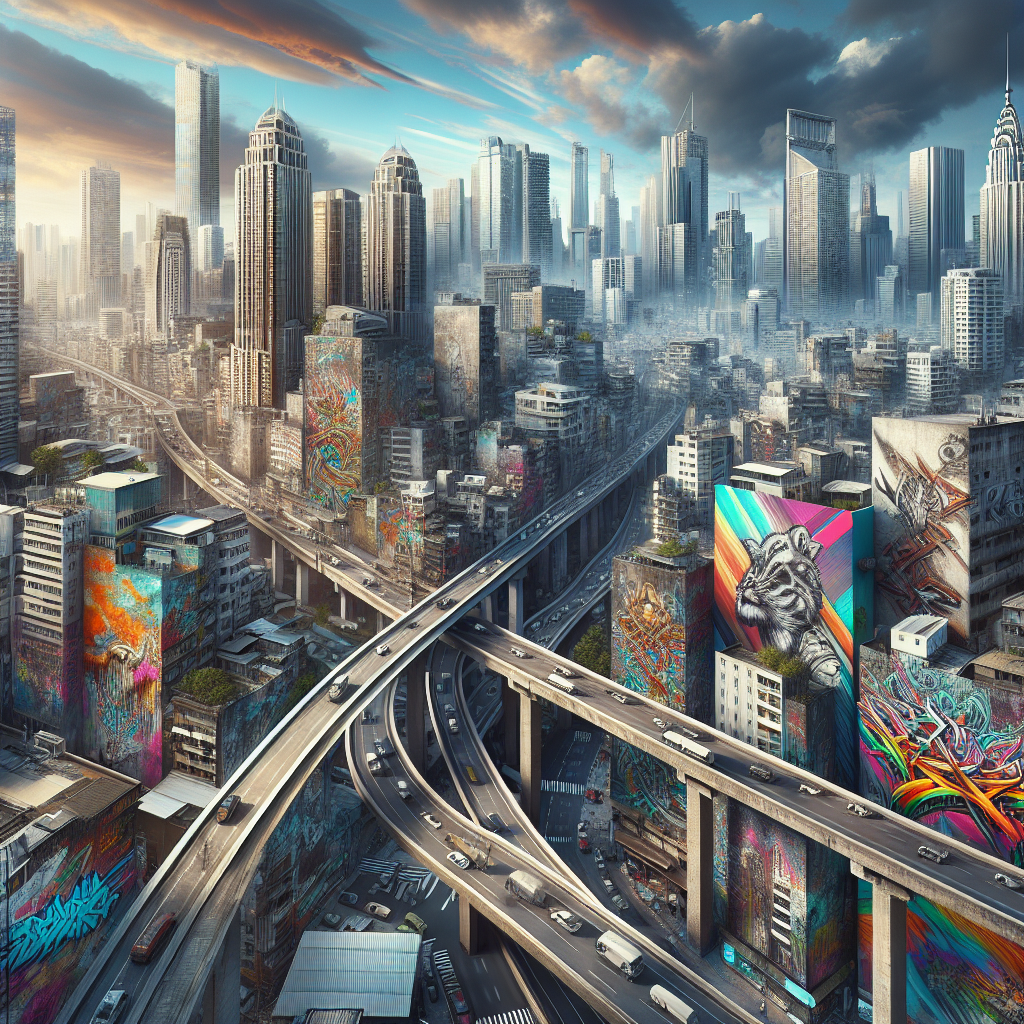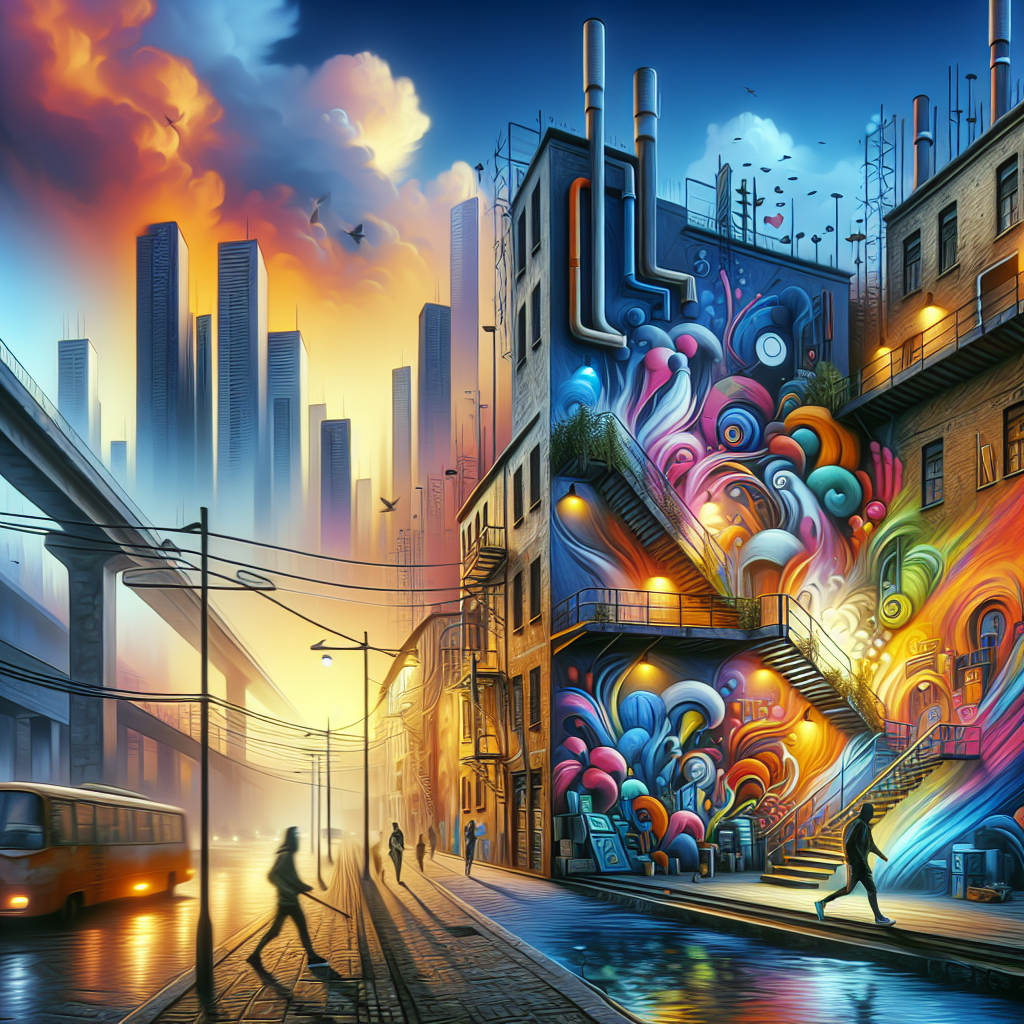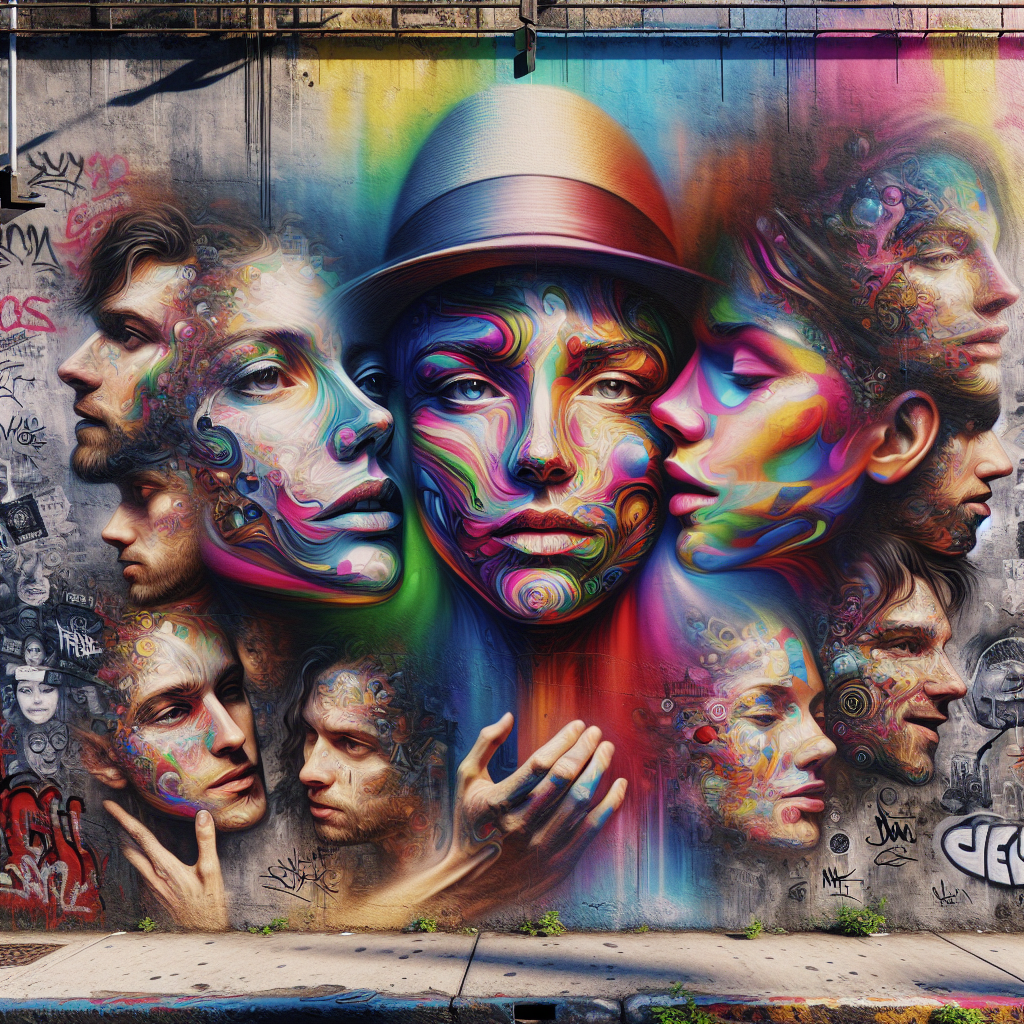
In the heart of bustling cities, where the rhythm of life beats strongest, a vibrant and dynamic world of expression thrives on the walls that line the streets. What was once dismissed as mere graffiti and street art, considered acts of vandalism, has now evolved into powerful mediums that not only adorn the urban landscape but also play a crucial role in shaping the cultural fabric of these environments.
Street art and graffiti have transcended their origins to become influential forms of artistic expression that resonate deeply with communities across the globe. These art forms serve as visual narratives that reflect the diverse voices, stories, and struggles of the people who inhabit these spaces. From political statements to social commentary, from whimsical illustrations to intricate murals, each piece of street art carries with it a unique message that speaks to the very essence of urban life.
By exploring the significance of street art and graffiti, we uncover a rich tapestry of creativity that not only beautifies the concrete jungles of cities but also challenges conventional notions of art and public space. These art forms have the power to transform mundane streets into open-air galleries, inviting passersby to engage with art in unexpected ways and fostering a sense of connection and community among residents and visitors alike.
Moreover, street art and graffiti have the ability to shift perceptions and provoke thought, sparking conversations about important issues such as social justice, environmental sustainability, and cultural identity. Through their bold colors, intricate designs, and powerful messages, these art forms serve as catalysts for change, inspiring individuals to question the status quo and envision a more inclusive and vibrant urban environment.
The Evolution of Street Art

Originating from the streets as a form of rebellion and protest, street art has evolved into a legitimate art movement, captivating both artists and audiences worldwide. What was once considered a subversive act is now celebrated for its ability to provoke thought, evoke emotions, and challenge social norms.
A Canvas of Diversity

Street art and graffiti provide a platform for marginalized voices to be heard. Artists use the cityscape as their canvas, infusing neighborhoods with diverse perspectives, cultural heritage, and stories that might otherwise go untold. These vibrant murals serve as a visual dialogue, sparking conversations on issues ranging from politics and social justice to environmental concerns.
Blurring Boundaries

As street art continues to gain recognition, the lines between "high art" and "street art" have blurred. Galleries now showcase works that were once confined to the streets, bridging the gap between traditional art spaces and urban landscapes. This fusion has brought about a new era of artistic collaboration and cultural exchange, enriching the artistic tapestry of cities around the globe.
The Impact on Urban Spaces
The presence of street art and graffiti transforms ordinary streets into dynamic galleries, breathing life into neglected corners and revitalizing urban spaces. Murals act as landmarks, attracting tourists and locals alike, fostering a sense of community pride and identity. These art interventions not only beautify cities but also serve as a mirror reflecting the social fabric and diverse narratives of the people who inhabit these spaces.
Cultivating Creativity and Empathy
Beyond aesthetics, street art stimulates creativity and imagination in both artists and viewers. By breaking free from conventional artistic constraints, street art encourages individual expression, inspires unconventional thinking, and challenges preconceived notions. It fosters empathy by offering glimpses into different perspectives, fostering understanding and solidarity among diverse communities.
A Call for Reflection
In a fast-paced world where urban landscapes are constantly changing, street art and graffiti urge us to pause, observe, and reflect on the stories woven into the walls that surround us. They remind us of our shared humanity, prompting us to engage with our surroundings in a meaningful and introspective way.
Embracing the Unseen
As we navigate the city streets, let us embrace the unseen influences of street art and graffiti that shape our urban environments. Let us celebrate the artists who illuminate our cities with their creativity, passion, and vision, and recognize the profound impact that these art forms have on our collective consciousness.
In conclusion, street art and graffiti are not merely visual elements in urban landscapes but powerful tools that provoke thought, inspire change, and cultivate a sense of belonging. They invite us to explore the dynamic intersections between art, culture, and community, enriching our urban experiences and shaping the narratives that define our cities.
Let us continue to walk the streets with open eyes and open hearts, ready to uncover the hidden gems that lie within the art that surrounds us.
Thank you for reading as we explored the multifaceted significance of street art and graffiti in urban spaces. Join us in celebrating the artists who breathe life into our cities and the transformative power of artistic expression.
Keywords: street art, graffiti, urban spaces, creativity, cultural heritage, community, diversity
Comments